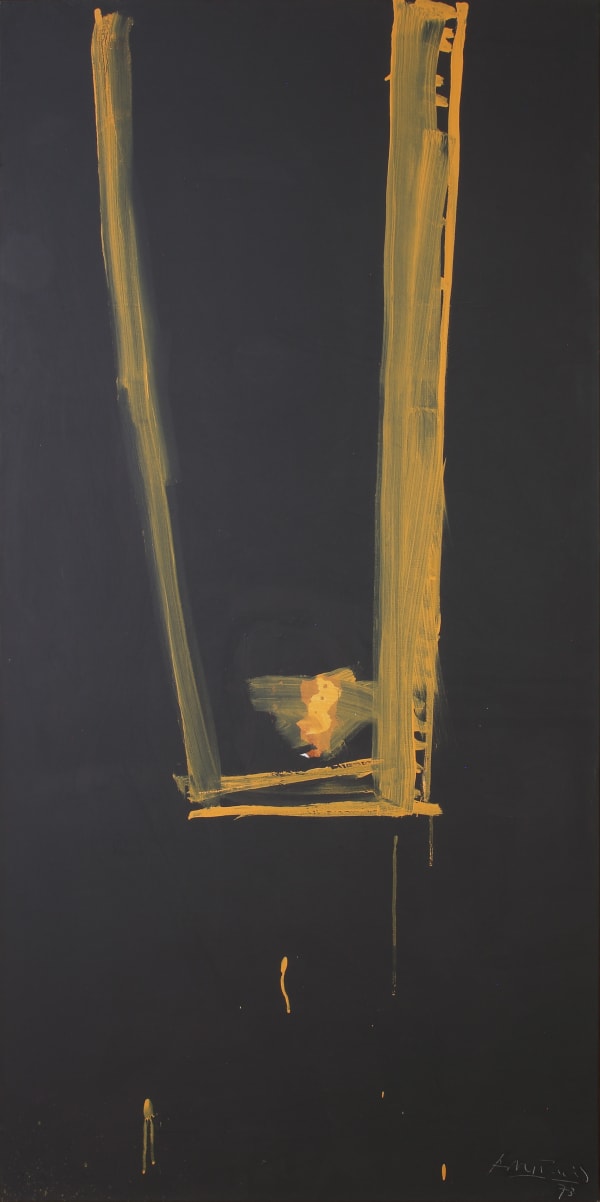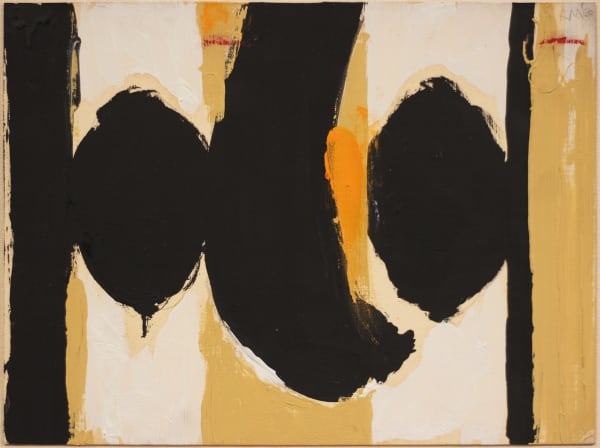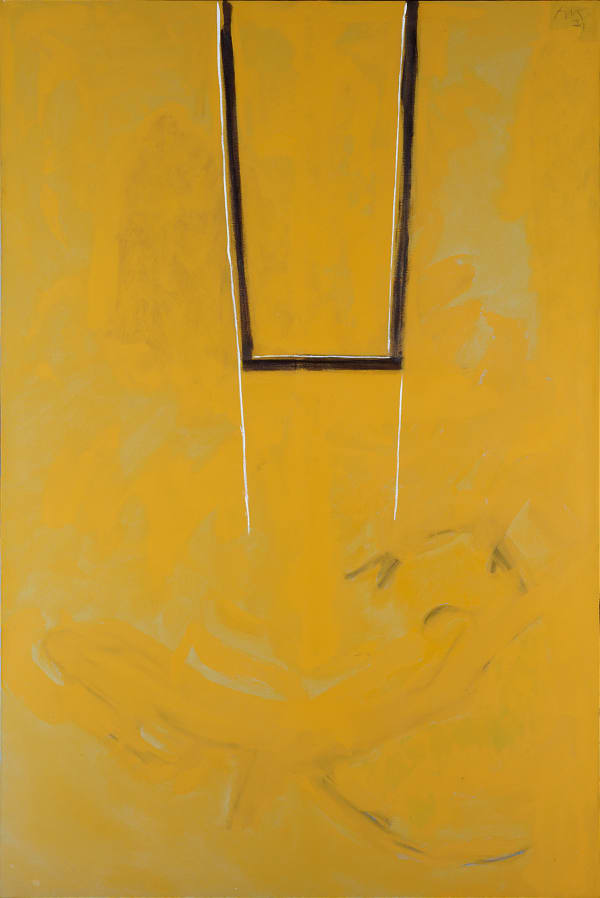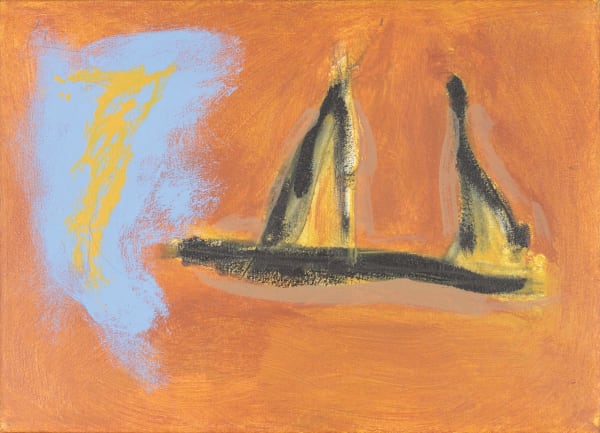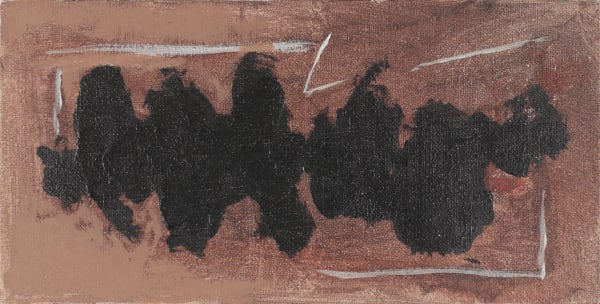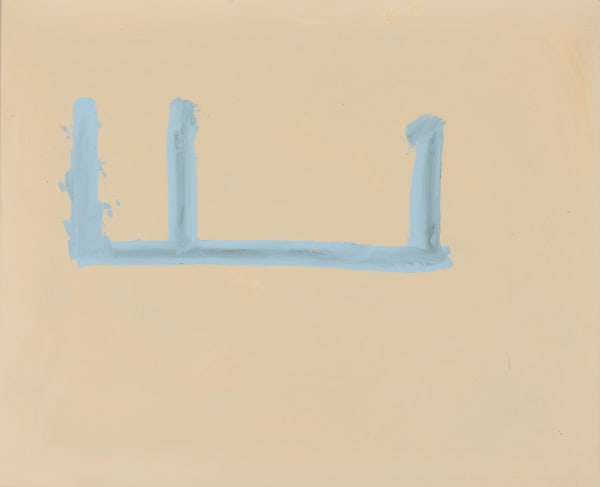Robert Motherwell: Paintings
-
Works
-
 Robert MotherwellAlberti Suite No. 8 , 1970Acrylic on canvas
Robert MotherwellAlberti Suite No. 8 , 1970Acrylic on canvas -
 Robert MotherwellBlack Open, 1973Acrylic on canvas
Robert MotherwellBlack Open, 1973Acrylic on canvas -
 Robert MotherwellDr. Zhivago's Country Study, 1975Acrylic on canvas board
Robert MotherwellDr. Zhivago's Country Study, 1975Acrylic on canvas board -
 Robert MotherwellElegy to the Spanish Republic No. 163, 1979-1982Acrylic and Conte crayon on board
Robert MotherwellElegy to the Spanish Republic No. 163, 1979-1982Acrylic and Conte crayon on board -
 Robert MotherwellElegy to the Spanish Republic No. 60, 1960Oil on paperboard
Robert MotherwellElegy to the Spanish Republic No. 60, 1960Oil on paperboard -
 Robert MotherwellGreat Wall of China No. 4, 1971Acrylic and charcoal on canvas
Robert MotherwellGreat Wall of China No. 4, 1971Acrylic and charcoal on canvas -
 Robert MotherwellHomage to Catalonia, 1985Acrylic on canvas
Robert MotherwellHomage to Catalonia, 1985Acrylic on canvas -
 Robert MotherwellIberia No. 30, 1969Acrylic on canvas board
Robert MotherwellIberia No. 30, 1969Acrylic on canvas board -
 Robert MotherwellOpen #125: Jeannie , 1969Acrylic and charcoal on canvas board
Robert MotherwellOpen #125: Jeannie , 1969Acrylic and charcoal on canvas board -
 Robert MotherwellOpen No. 45: In Blue with Brown, 1969Acrylic and charcoal on canvas
Robert MotherwellOpen No. 45: In Blue with Brown, 1969Acrylic and charcoal on canvas -
 Robert MotherwellOpen Untitled (Yellow), 1981Acrylic and charcoal on canvas
Robert MotherwellOpen Untitled (Yellow), 1981Acrylic and charcoal on canvas -
 Robert MotherwellPremonition Open, with Flesh over Grey, 1974Acrylic, charcoal, and graphite on canvas
Robert MotherwellPremonition Open, with Flesh over Grey, 1974Acrylic, charcoal, and graphite on canvas -
 Robert MotherwellRoyal Dirge, 1972Acrylic on canvas
Robert MotherwellRoyal Dirge, 1972Acrylic on canvas -
 Robert MotherwellShem the Penman #19, 1983Acrylic and charcoal on canvas
Robert MotherwellShem the Penman #19, 1983Acrylic and charcoal on canvas -
 Robert MotherwellSummertime in Italy Sketch #13, 1970Acrylic on canvas board
Robert MotherwellSummertime in Italy Sketch #13, 1970Acrylic on canvas board -
 Robert MotherwellThe Studio, 1987Acrylic and charcoal on canvas
Robert MotherwellThe Studio, 1987Acrylic and charcoal on canvas -
 Robert MotherwellElegy Sketch, 1980Acrylic on canvas board
Robert MotherwellElegy Sketch, 1980Acrylic on canvas board -
 Robert MotherwellUntitled (Open in Yellow, Black and Blue), 1970Acrylic and charcoal on canvas board
Robert MotherwellUntitled (Open in Yellow, Black and Blue), 1970Acrylic and charcoal on canvas board -
 Robert MotherwellUntitled (Red Open), 1970Acrylic and charcoal on canvas board
Robert MotherwellUntitled (Red Open), 1970Acrylic and charcoal on canvas board -
 Robert MotherwellTwo Figures No.7, 1958Oil on paperboard mounted on board
Robert MotherwellTwo Figures No.7, 1958Oil on paperboard mounted on board -
 Open No. 126: In Beige with Blue, 1970Acrylic on canvas
Open No. 126: In Beige with Blue, 1970Acrylic on canvas -
 Robert MotherwellUntitled, 1990Acrylic and coloured pencil on panel
Robert MotherwellUntitled, 1990Acrylic and coloured pencil on panel
-
-
Press Release Text
Bernard Jacobson Gallery presents a three-part showcase of works by American artist Robert Motherwell (1915-1991). The opening exhibition displayed a selection of etchings, lithographs and screen prints, whilst the second exhibition concentrated on collages and works on paper. This final exhibition showcases a collection of paintings.
Born in 1915 in Aberdeen (Washington, USA), Motherwell decided to devote himself professionally to art at the age of twenty-six, after an extensive education in both philosophy and art history at the universities of Stanford, Harvard and Columbia. Motherwell became a leading spokesman for the Abstract Expressionist movement and was greatly influenced, like many of his contemporaries, by Surrealism. The Parisian Surrealists introduced to Motherwell ‘automatism’, a practice that strives for creation without conscious thought. Throughout his career, he stated that his work was an experimentation in visualising his feelings. Referring to his automatic practice as “doodling”, Motherwell tapped into his deepest thoughts in order to produce pictorial imagination, which distinguished him from peers who were more easily characterised by definitive artistic techniques.
In 1938, Motherwell was hired to oversee the set design for two plays at the America Little Theatre on Paris’ Boulevard Raspail. This experience catalysed the birth of Motherwell’s practice as a painter. Through 1939 and 1940, professor Meyer Schapiro taught Motherwell history of art at Columbia, yet encouraged his student to devote himself to painting as opposed to the pursual of academia. It was Schapiro, too, who introduced Motherwell to Marcel Duchamp, Max Ernst and André Masson, and, at a series of lectures on Surrealism at the New School for Social Research, the young Chilean painter Roberto Matta. Motherwell and Matta travelled to Mexico in 1941, and it was here that Motherwell’s paintings began to reflect his profound engagement with automatism and abstraction.
Although Motherwell embraced a range of artistic mediums throughout his career, he made a critical switch to acrylic paint in the 1960s due to its fast drying properties, and the freedom this enabled in comparison to oil. He was drawn to a rich palette, particularly favouring hues of ochre, black and white, vermilion, and powder blue, and declared "I belong to a family of ‘black’ painters and earth colour painters in masses, which would include Manet and Goya and Matisse.” His painterly techniques, though, developed from those of the New York School, as automatic gestures and wandering brushstrokes allowed for intuitive abstraction.
A committed Abstract Expressionist and a powerfully articulate spokesperson for the movement, Motherwell strove to tap into an emotion to generate each work. He stressed that when the original emotion has exhausted itself, the painting is finished, and insisted that a subject may be humanly poetic despite the high degree of abstraction in its rendering. These beliefs ring true in Motherwell’s seminal Elegies to the Spanish Republic (1948-1967), a series of over one hundred paintings paying homage to the devastation of the Spanish Civil War, defined through the repetition of a black oval motif; recurrent yet distorted, manipulated, and compressed. The vast abstract forms found in his paintings, at times monumental in scale, were individualistic – a quality he much admired in the concurrent modernist tradition.
Within his painterly practice, Motherwell made clear that “The game is not what things look like. The game is organizing states of feeling, and states of feeling become questions of light, color, weight, solidity, airiness, lyricism, whatever.”


